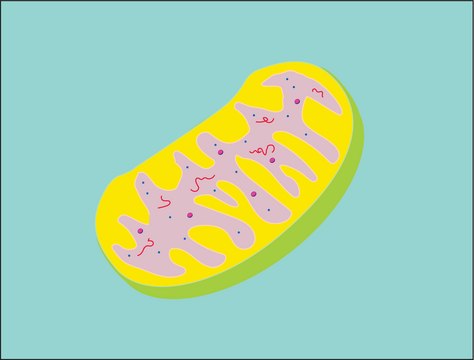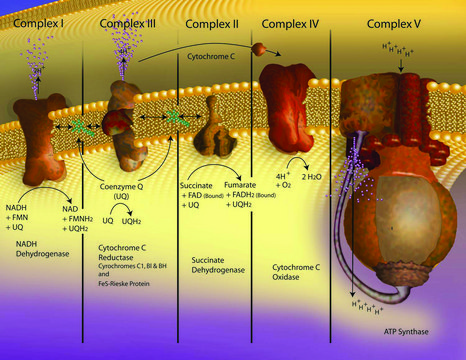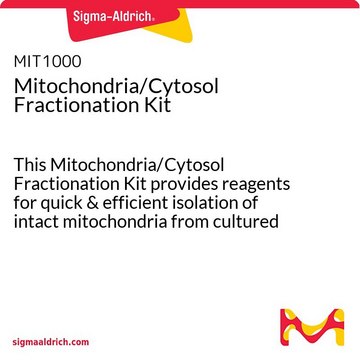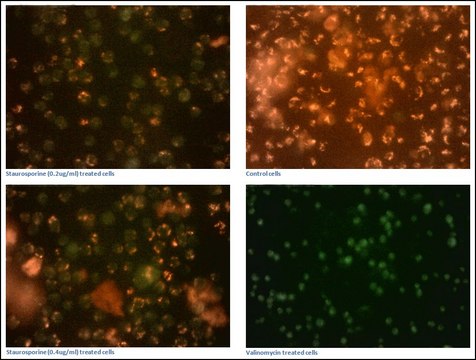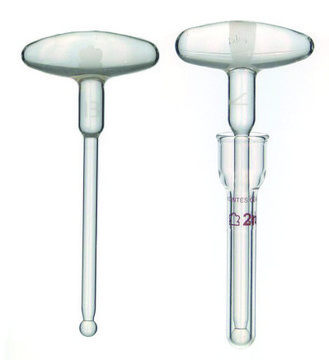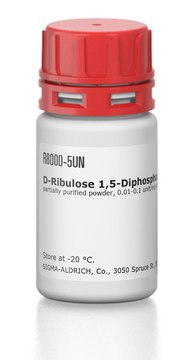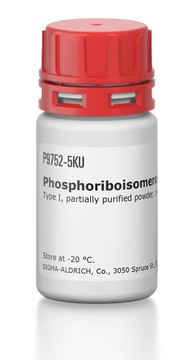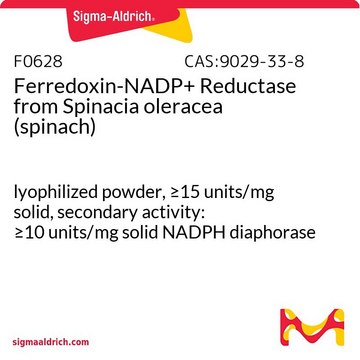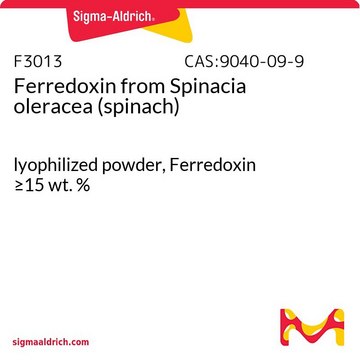MITOISO1
Mitochondria Isolation Kit
sufficient for 10-20 g (animal tissue), sufficient for 50 assays (2 mL), isolation of enriched mitochondrial fraction from animal tissues
Synonym(s):
Mitochondria Purification Kit
Select a Size
CN¥1,432.73
Select a Size
About This Item
CN¥1,432.73
Recommended Products
Quality Level
usage
sufficient for 10-20 g (animal tissue)
sufficient for 50 assays (2 mL)
shelf life
2 yr
technique(s)
fractionation: suitable
shipped in
dry ice
storage temp.
−20°C
Looking for similar products? Visit Product Comparison Guide
1 of 4
This Item | P9752 | F0628 | F3013 |
|---|---|---|---|
| specific activity 0.01-0.1 unit/mg solid | specific activity ≥40 units/mg protein (biuret) | specific activity ≥15 units/mg solid | specific activity - |
| biological source spinach | biological source spinach | biological source - | biological source spinach (Spinacia oleracea) |
| form partially purified powder | form partially purified powder | form lyophilized powder | form lyophilized powder |
| mol wt 557 kDa | mol wt - | mol wt - | mol wt - |
| storage temp. −20°C | storage temp. −20°C | storage temp. −20°C | storage temp. −20°C |
| Quality Level 200 | Quality Level 200 | Quality Level 200 | Quality Level 200 |
Application
- for the separation of mitochondrial and cytosolic fraction for determining the branched-chain aminotransferase (BCAT) activity[1]
- for the isolation of mitochondria from glomeruli[2] and heart[3]
- for the isolation of mitochondria from injured brain samples for the measurement of mitochondrial transmembrane potential[4]
Features and Benefits
- Specially formulated extraction reagents & proven procedure suitable for small scale isolation - Isolate an enriched, intact mitochodrial fraction in a microfuge tube.
- Produces functionally active, intact mitochondria - Resulting mitochondria are suitable for in vitro assays for apoptosis, oxidative stress or other studies.
- Includes stain & protocol for determining inner membrane integrity - Determine the integrity of the inner mitochondrial membrane without the need to purchase other reagents.
- Compatible with the Cytochrome c Oxidase Assay Kit - Allows easy determination of the integrity of the outer mitochondrial membrane
Kit Components Also Available Separately
- T9201Trypsin from bovine pancreas, powder, ≥7,500 BAEE units/mg solidSDS
related product
Signal Word
Danger
Hazard Statements
Precautionary Statements
Hazard Classifications
Eye Irrit. 2 - Resp. Sens. 1 - Skin Irrit. 2 - STOT SE 3
Target Organs
Respiratory system
Storage Class Code
10 - Combustible liquids
Regulatory Information
Choose from one of the most recent versions:
Certificates of Analysis (COA)
Don't see the Right Version?
If you require a particular version, you can look up a specific certificate by the Lot or Batch number.
Already Own This Product?
Find documentation for the products that you have recently purchased in the Document Library.
Which document(s) contains shelf-life or expiration date information for a given product?
If available for a given product, the recommended re-test date or the expiration date can be found on the Certificate of Analysis.
Can Product MITOISO1, Mitochondria Isolation Kit, be used for isolation of mitochondria from cultured cells?
It is possible to use this kit for cultured cells, however MITOISO2 is a kit that was specifically designed for this purpose. This kit was originally designed for isolation from tissues.
Are the extraction buffers from Product MITOISO1, Mitochondria Isolation Kit, available separately?
The extraction buffers supplied with this kit are only available with the kit.
When using Product MITOISO1, Mitochondria Isolation Kit, how long can I store my isolated mitochondria?
If only interested in the proteins isolated from mitochondria, storage at -20 deg C is recommended. If intact mitochondria are required, storage at 4 deg C is recommended. These intact mitochondria are stable after refrigeration for up to 24 hours.
How much tissue can I use with Product MITOISO1, Mitochondria Isolation Kit,?
The procedures described in the bulletin are for small amounts of tissue samples (50-200 mg). Larger amounts of tissue can be purified with modifications listed in the technical bulletin. We recommend a minimum of 50 mg.
Is the Product MITOISO1, Mitochondria Isolation Kit, JC-1 stain available separately?
Yes, while the component J4519 is not available separately, JC-1 stain is listed separately as Sigma Product No. T4069 or Product No. 40882.
How do I get lot-specific information or a Certificate of Analysis?
The lot specific COA document can be found by entering the lot number above under the "Documents" section.
How do I find price and availability?
There are several ways to find pricing and availability for our products. Once you log onto our website, you will find the price and availability displayed on the product detail page. You can contact any of our Customer Sales and Service offices to receive a quote. USA customers: 1-800-325-3010 or view local office numbers.
What is the Department of Transportation shipping information for this product?
Transportation information can be found in Section 14 of the product's (M)SDS.To access the shipping information for this material, use the link on the product detail page for the product.
When using Product MITOISO2, Mitochondria Isolation Kit, how can I store my isolated mitochondria?
Please see below for information on how best to store your isolated mitochondria using the MITOISO2 kit:If only interested in the proteins isolated from mitochondria, storage at -20 deg C is recommended. If intact mitochondria are required, storage at 4 deg C is recommended. These intact mitochondria are stable after refrigeration for up to 24 hours.
My question is not addressed here, how can I contact Technical Service for assistance?
Ask a Scientist here.
Articles
Centrifugation separates organelles based on size, shape, and density, facilitating subcellular fractionation across various samples.
Cellular apoptosis assays to detect programmed cell death using Annexin V, Caspase and TUNEL DNA fragmentation assays.
Cellular oxidative stress is countered by enzymatic scavengers and antioxidant modulators against reactive oxygen species damage.
Our team of scientists has experience in all areas of research including Life Science, Material Science, Chemical Synthesis, Chromatography, Analytical and many others.
Contact Technical Service